I tilted my chin up and let the sunshine warm my face. Day after day in Provence brought crystal blue skies and fresh breezes that kept the sweltering summer heat at bay. I had come to southern France for its sunshine, but not for the same reason as most sun worshipers. What drew me were the famous Charentais melons of Provence. In addition to making me sigh with bliss, the sunshine of southern France combines with the region’s pure water, rich soil, and Mistral winds to create the perfect growing conditions for this delicious fruit.
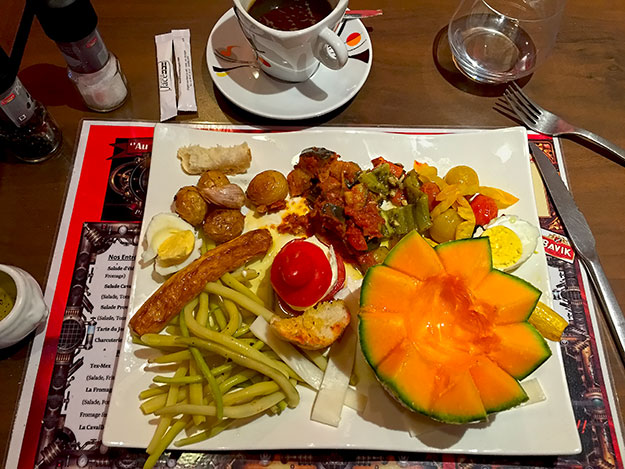
I’d been curious about Charentais melons for quite some time. In the wee hours of the morning, on one of those rare occasions when I was in the U.S., I’d watched an informercial with a Hollywood cosmetic surgeon who claimed he could reverse the aging process. His secret? A ingredient extracted from the melons of Provence, France.
Normally, I wouldn’t buy into such hype, but over the last few years I’d begun avoiding mirrors. Inside I feel 45, but my wrinkles and white hair make me look every bit of my 64 years. If there was even the slightest possibility that these melons were a miracle cure, I wanted to know.
Fortunately, I was already scheduled to visit Provence to fulfill a dream of seeing the Lavender fields in bloom. Then, as often happens, serendipity kicked in. I’d booked accommodations at the historic Hotel du Parc in the village of Cavaillon. This small rural town is known for its rock climbing, as a stop along the Tour de France Bike Race, and even for its twice weekly markets. But most of all, Cavaillon is famous for its melons, and for the week-long festival that is held in their honor each July.
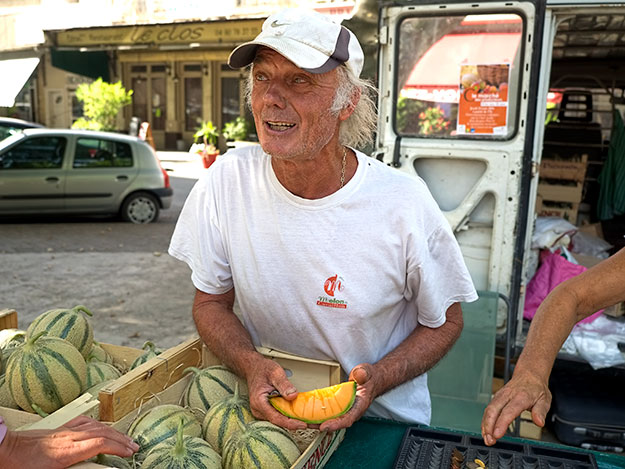
I arrived a week after the festival, but still during peak melon season. My first taste of Provençal ambrosia was during Cavaillon’s weekly farmers market. Bernard Meyssard, owner of a successful local melon farm, shoved a big wedge into my hand. I bit into the peach-colored flesh and closed my eyes to savor the moment. Juice dribbled down my chin and onto my shirt, but I didn’t care. I took another bite and another, reveling in the rich, earthy sweetness that sent my saliva glands into overdrive. When I opened my eyes again, Monssieur Meyssard’s sun-weathered face was splintered by a huge grin.
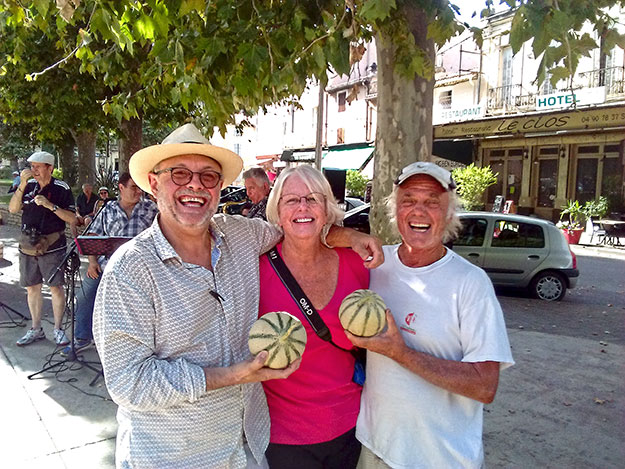
Before I could say thank you, we were joined by Jean-Jacques Prévôt, another local character and melon lover. Thirty-five years ago, Jean-Jacques opened Restaurant Prévôt with the idea that melons shouldn’t be just for breakfast. Back then, the only gastronomic specialty that utilized melons was an appetizer that paired wedges of the fruit with shaved slices of the local cured ham. Prévôt loved melons – the taste of them, the smell of them, even the perfect globular shape of them. And he believed they should have a more forceful presence in French cuisine. His first creation was roasted melon with red mullet, tomato, olives, and olive oil, a dish that is still on the menu today. Gradually, he developed an entire summer menu based on melons that has earned him a Michelin star.

Later that week I met Jean-Jacques at his restaurant. I put myself in his capable hands, allowing him to choose my menu, with the one caveat that it contain no meat other than seafood. For the starter he served fresh cold tomato soup with a tarragon-infused ice cube, mushroom à la Provençal with red berry vinegar, eggplant cake topped with red pepper marmalade, and red radish topped with hazelnut crumble and lemon yuzu cream.
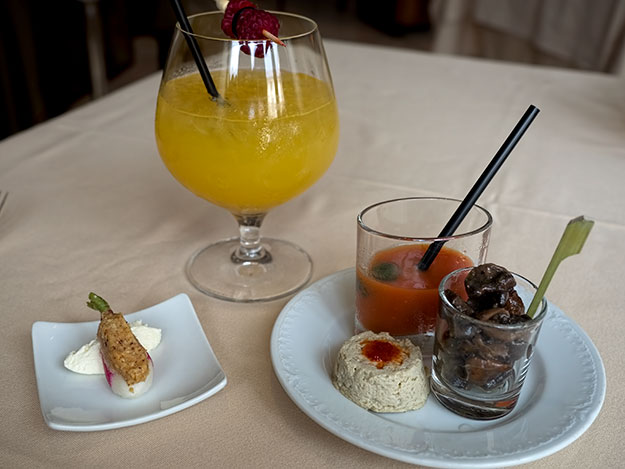
My mise en bouche (before the main course) was Panna Cotta on a bed of pea soup, topped with farm-fresh peas.

The first course followed: a zucchini flower stuffed with prawn mousse, hake fish, and yellow zucchini, seated on a bed of fresh zucchini soup and topped with foam of the crustacean.
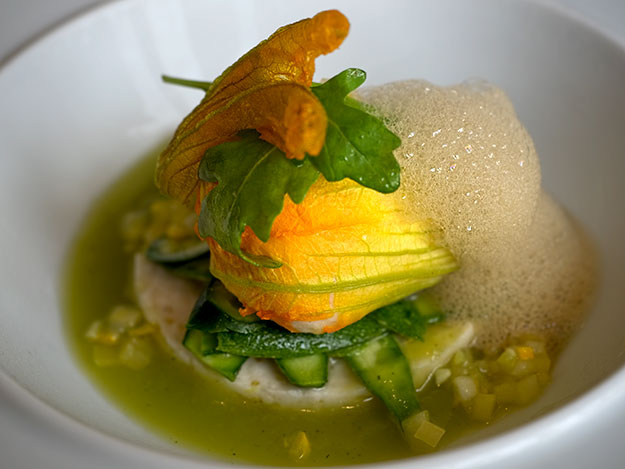
I didn’t think it could get any better, even with melons, but Jean-Jacque was about to blow me away with the main course. Twenty-five years ago he cut the top off a melon, scooped out the center, and baked it in the oven for 20 minutes. Into the husk, dripping with caramelized sugar, he poured a spicy lobster bisque with hunks of lobster and melon balls. That same landmark dish, Melon Cocotte with Lobster, now arrived at my table, topped by an edible fennel flower.

The first spoonful of the bisque assaulted my taste buds. It was simultaneously spicy, sweet, musky, and salty. The richness of the lobster was perfectly complimented by the sweetness of the melon and the spiciness added just the right touch of warmth.
I wasn’t surprised to learn that Jean-Jacque buys many of his melons from the same Bernard Meyssard whom I had met at the Cavaillon farmers market. After tasting (and swooning over) Bernard’s melons, I had excitedly accepted an invitation to visit his farm. I arrived as Bernard and his wife, Martine, were walking slowly down the rows, using short bamboo sticks to move aside leaves that covered the melons. With just a glance they knew whether or not the fruit was ripe. “This one tomorrow,” Bernard said. He carefully replaced the leaves over those he did not pick. “So they do not burn,” he explained. The next one he clipped off the vine and held it up for me to examine.
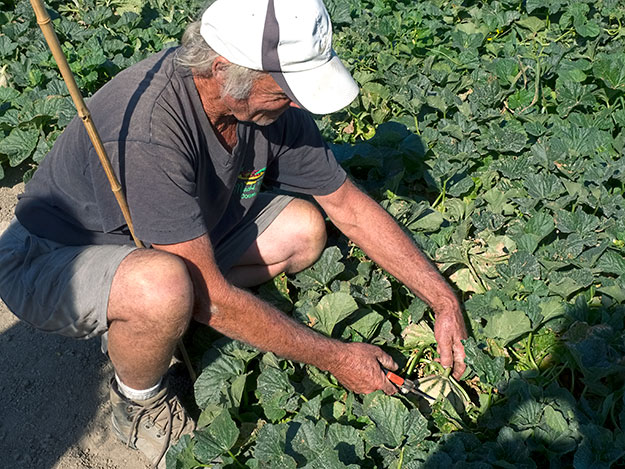
I counted the pale green stripes running longitudinally through its parchment colored skin. “This is a good one because it has ten stripes, correct?” I asked. Bernard leaned over and whispered conspiratorially. “Well, they say so but it is not true.” I confessed that I pick my melons by smelling the spot where the vine had been attached, adding that I always felt a little foolish doing so. I seem to be the only customer in the grocery store who sniffs the melons.

He chuckled and shook his head. “Choosing a good melon has nothing to do with smell either. Look for three things. First, weight. The melon should be very heavy. That means it has a lot of water and is very sweet. Second, the skin should be rough, with distinct lacy designs. And third, there should be a split at the base of the stem where it meets the globe.” He assured me that I would always pick the perfect melon if I followed these three rules.
I couldn’t say for certain that my melon sniffing days were behind me, but I was willing to give it a try – until I learned that Bernards’s Charentais melons are not for sale in any grocery store. He sells directly, at local farmers markets and at two family-owned roadside stands. If only I could live in Provence, where I could gorge on Bernards’s fresh-picked melons every morning from May through August.

Lacking that option, I did the next best thing. I dug back into my Melon Cocotte and spooned up every last drop. I would have been in culinary bliss had the meal ended at that point, but Jean-Jacques had more surprises in store. My pre-dessert arrived next, strawberry mouse in a berry coulis with a brownie inside.
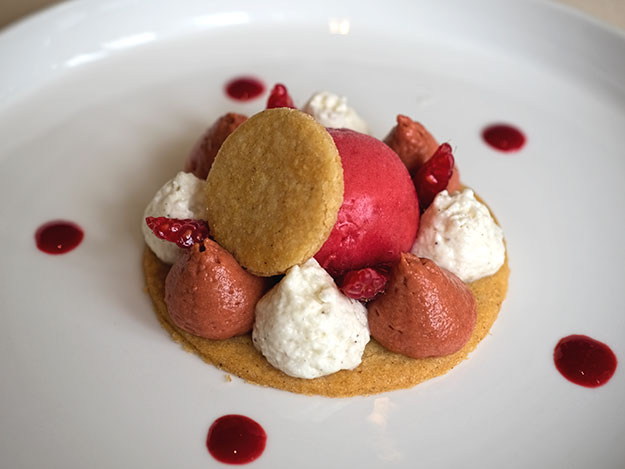
A dessert of ginger biscuits topped with red pepper and raspberry mousse, vanilla mousse, and raspberry and violet ice cream followed. As if that wasn’t enough, a tray of baked goodies accompanied my after-dinner coffee. I waddled out of Restaurant Prévôt, certain that I wouldn’t have to eat for a week. But of course, the next morning I was craving more melon.
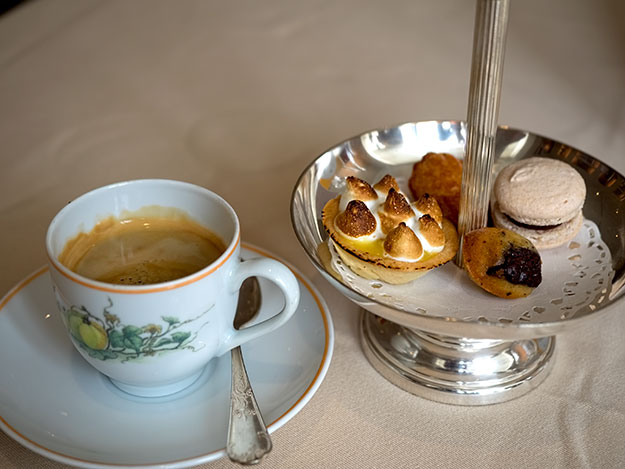
During my month in Provence, I ate Cavaillon’s famous Charentais melons at every opportunity. They were my breakfast every morning, and a giant wedge was included with almost every dinner. My nails grew long and strong, my hair took on a silky sheen, and I lost ten pounds. As for the wrinkles, well, they didn’t disappear entirely, but the face staring back at me in the mirror looks somehow younger, brighter.
Some may be willing to pay exorbitant prices for anti-aging creams that contain the extract of French melons. Who knows; maybe it actually works. But I’d much rather pay $3 and enjoy the benefits of the real melons of Provence. Plus, I can’t think of any better excuse for spending my summers in Provence!
Author’s note: The Melon Menu at Restaurant Prévôt is priced at an affordable €68 ($76 USD at this writing). Spring water, coffee, and aperitif cost an additional plus €14.50 ($16.25), for a total of €82.50 ($92.36). As Michelin Star restaurants go, that’s a true bargain for a seven-course meal.
Disclosure: I was a guest of Jean-Jacque and his lovely wife, Sylviane, and their daughter, Sandra Rose. However the acceptance of complimentary items never influences what I write. I always tell the truth about my experiences. And the truth in this case is that Restaurant Prévôt should be on the itinerary of any visitor who loves melons.

I was on the internet one day and discovered this magic melon cream. I have been following up ever since. It is what I refer to as the “Gold Cream,” to eliminating wrinkles. I will be buying this in the next few weeks, as I want my face to look young and fresh. We all should take care of our skin, because there is only one. Thank you Cindy Crawford and Dr. Jean Louis Sebagh. Maria L. Diaz
Restaurant Prévôt – the pannacotta truly a beauty. What a nice treats do so beautifully presented. Have you seen the movie with Helen Mirren in the French countryside? She covets her restaurant’s Michelin 4 stars, striving for her 5th when an Indian family moves across the road, opens an authentic tandoori style restaurant and foils her 5 star chances. A very delightful distraction if you ever get a chance to watch it.
http://m.imdb.com/title/tt2980648/
The 100 foot Journey
Hi Patti: Yes! I absolutely loved that movie, especially since I love Indian food and all the Indian/Nepali spices.
I hope you’ll tell us where you stayed for a month. I know your budget and mine are much alike. I’m loving your posts about the south of France.
Libbie
P.S. I love those melons. Wish somebody would produce them with Provencal flavor in the U.S.
Hi Libbie: Well, I was in Toulouse for a while, which is not really Provence. But there I stayed in the Ibis prior to going to Monaco, and upon returning I stayed at a hostel named Le Petite Auberge de Saint-Sernin. Once in a while I splurge, and Cavaillon was one of those times. I stayed in Hotel du Parc, an historic old hotel that is owned and operated by a lovely woman and her daughters. It was about $1,000 for nine days. WAY more than my normal budget, but it really did allow me to immerse with the locals. In Avignon I stayed at Pop Hostel. France in general is not the best destination for budget travel, but if you stick to hostels you can do it for about $50 per day, including breakfast. Hope that helps.
As for the melons, they say that in Provence, the soil condition, rain, sun, and Mistral winds combine to create a perfect environment for growing the melons. And they also say these conditions cannot be found anywhere else in the world.
Such a fun post and one of my favorites among all blogs this season! Thanks for sharing. And PS you don’t even remotely look 64.
Thank you Peggy! However, it’s a small photo, so you can’t really see all the wrinkles. LOL.